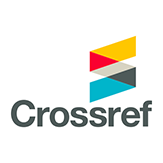Timbang Besarnya Manfaat dari Salah Sasar Penerima Bantuan Iuran Jaminan Kesehatan
Abstract
Keywords
References
(1) Alatas, V., Banerjee, A., Hanna, R., Olken, B.A., Purnamasari, R. and Wai-Poi, M., 2013. Does elite capture matter? Local elites and targeted welfare programs in Indonesia (No. w18798). National Bureau of Economic Research.
(2) Alatas, V., Purnamasari, R. and Wai—Po, M., 2011. 15 targeting of the poor and vulnerable. Employment, Living Standards and Poverty in Contemporary Indonesia, p.313. diakses pada 22 Maret 2018
(3) Baihaqi, M.B. 2018 Pemerintah Targetkan 95% Penduduk Terlindungi JKN di 2019. Neraca [1 Februari 2018]. Diakses pada 21 Februari 2018
(4) BPJS Kesehatan. 2016. Pentingnya Dukungan Pemda untuk mencapai Universal Health Coverage. InfoBPJS Kesehatan Edisi 44 Tahun 2016. Badan Penyelenggara Jaminan Sosial Kesehatan. Diakses pada 21 Februari 2018
(5) Harimurti, P., Pambudi, E., Pigazzini, A. and Tandon, A., 2013. The Nuts & Bolts of Jamkesmas, Indonesia’s Government-Financed Health Coverage Program for the Poor and Near-Poor.
(6) Media JKN, 2016. Astaga! Kurang Sosialisasi, Masyarakat tidak tahu Program BPJS. Media Sosialisasi JKN: Edisi Khusus Nov 2016. Diakses pada 22 Maret 2018
(7) Pasien BPJS, 2016. Cara Daftar Menjadi Peserta BPJSPBI (Syarat dan Prosedur). Diakses pada 22 Maret 2018
(8) Pradhan, M., Saadah, F. and Sparrow, R., 2007. Did the health card program ensure access to medical care for the poor during Indonesia’s economic crisis?. The World Bank Economic Review, 21(1), pp.125-150.
(9) Sim, A.A., Negara, R. and Suryahadi, A., 2015. Inequality, elite capture, and targeting of social protection programs: Evidence from Indonesia. SMERU Research Institute.
(10) Sparrow, R., Suryahadi, A. and Widyanti, W., 2013. Social health insurance for the poor: Targeting and impact of Indonesia’s Askeskin programme. Social science & medicine, 96, pp.264-271.
(11) TNP2K Sekretariat Wakil Presiden Republik Indonesia. 2015. Menuju Sistem Registrasi Tunggal untuk Perlindungan Sosial.
(12) Yamauchi, C., 2010. Community-based targeting and initial local conditions: Evidence from Indonesia’s IDT Program. Economic Development and Cultural Change, 59(1), pp.95-147.
DOI: 10.7454/eki.v2i2.2148
Refbacks
- There are currently no refbacks.








